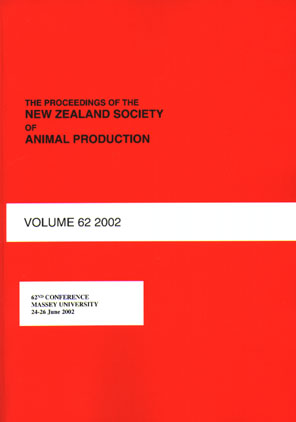Abstract
This review describes past research on suitable calving environments for farmed red deer and presents ideas on future topics for research. Neonatal mortality on deer farms is common, claiming 10-12% of calves born on average. Research carried out in the 1970s and observations of wild red deer identified three factors that were required to minimise behavioural problems and subsequent mortality of young calves: isolation of the hind from other deer, vegetative cover for the calves to hide in, and lack of disturbance by people. Subsequent studies have substantiated these observations but the needs for isolation and lack of disturbance cannot be readily fulfilled on intensive deer farms. Selection for deer that are tolerant of other deer and humans at calving time, and taming deer so that disturbance by humans is lessened, are areas in which future research may prove worthwhile.
Proceedings of the New Zealand Society of Animal Production, Volume 63, Queenstown, 247-250, 2003
| Download Full PDF | BibTEX Citation | Endnote Citation | Search the Proceedings |

This work is licensed under a Creative Commons Attribution-NonCommercial-NoDerivatives 4.0 International License.

